- Home
- Lisa Appignanesi
Mad, Bad, and Sad: A History of Women and the Mind Doctors
Mad, Bad, and Sad: A History of Women and the Mind Doctors Read online
MAD, BAD AND SAD
Also by Lisa Appignanesi
Free Expression is No Offence (ed)
Freud’s Women (with John Forrester)
Losing the Dead
Simone de Beauvoir
The Cabaret
Femininity and the Creative Imagination: Proust, James and Musil
FICTION
The Memory Man
Kicking Fifty
Unholy Loves
Paris Requiem
Sanctuary
The Dead of Winter
The Things We Do for Love
A Good Woman
Dreams of Innocence
Memory and Desire
EDITED VOLUMES
The Rushdie File (with Sarah Maitland)
Dismantling Truth (with Hilary Lawson)
Science and Beyond (with Stephen Rose)
Ideas from France: The Legacy of French Theory
Postmodernism
MAD, BAD AND SAD
Women and the Mind Doctors
LISA APPIGNANESI
W. W. NORTON & COMPANY
New York • London
Copyright © 2008, 2007 by Lisa Appignanesi
First published in Canada in 2007 under the title
Sad, Mad, and Bad: Women and the Mind-Doctors from 1800
First published in Great Britain in 2008 under the title Mad, Bad, and Sad:
A History of Women and the Mind Doctors from 1800 to the Present
All rights reserved
For information about permission to reproduce selections from this book, write to Permissions, W. W. Norton & Company, Inc., 500 Fifth Avenue, New York, NY 10110
Library of Congress Cataloging-in-Publication Data
Appignanesi, Lisa.
[Sad, mad, and bad]
Mad, bad and sad: women and the mind doctors/Lisa Appignanesi.—
1st American ed.
p. cm.
Originally published: Sad, mad, and bad: women and the mind-doctors from 1800. Canada, 2007.
Includes bibliographical references.
ISBN: 978-0-393-06994-5
1. Women—Mental health—History. 2. Women—Mental health services—History. 3. Mentally ill women—Rehabilitation—History. 4. Mental illness—Treatment—History. I. Title.
RC451.4W6 A66 2008
6163.890082—dc22
2008001775
W. W. Norton & Company, Inc., 500 Fifth Avenue, New York, N.Y. 10110
www.wwnorton.com
W. W. Norton & Company Ltd., Castle House, 75/76 Wells Street, London W1T 3QT
For Josh Appignanesi and Katrina Forrester
my two glorious children
who drive me mad
and make me sane
CONTENTS
Author’s Note
Introduction
PART ONE
A TIME BEFORE…
1 Mad and Bad
PART TWO
THE RISE AND RISE OF THE NEW SCIENCE
2 Passions
3 Asylum
4 Nerves
5 Hysteria
6 Sleep
PART THREE
THE CENTURY TURNS
7 Sex
8 Schizophrenia
9 Disturbances of Love
10 Mother and Child
11 Shrink for Life
PART FOUR
INTO THE PRESENT
12 Rebels
13 Body Madness
14 Abuse
15 Drugs
Epilogue
Notes
Select Bibliography
Copyright Acknowledgements
AUTHOR’S NOTE
This book owes a great debt to all the researchers, historians, thinkers, doctors–indeed patients, biographers, memoirists, writers and poets–who have ploughed this rich terrain before me. In particular I am grateful to the late, brilliant and indefatigable Roy Porter, who has served as inspiration to so many and who was also a friend. Something of an unattached outsider in the history of psychiatry and psychoanalysis, my debt extends across the divisions in what is nothing if not a contested field. Historians such as Edward Shorter, Andrew Scull, Sander L. Gilman, Richard Hunter and Ida Macalpine have shown the way; but so, too, have Jan Goldstein and Elizabeth Roudinesco in France, Nathan G. Hale, Nancy Tomes, and the anthropologist Tanya Luhrman in America, and Elaine Showalter. Attention needs to be drawn to the maker of one superbly abundant website, Andrew Roberts of Middlesex University.
People have asked me why, after writing fiction, I have chosen to immerse myself in the history of a science and practice which has so many of its own writing professionals.
I could answer that as a writer, I simply have a faith in the outsider’s view and have always had a fascination for the vagaries of the human mind. Or, since there are many ways of tracing one’s trajectory, I could say that an interest in madness was also a form of survival. My early family life–which I evoked in Losing the Dead–amongst people chased by the Holocaust to peaceful Canadian shores had its own strangeness, one that was hardly reflected in television sitcoms. Retrospectively, it makes sense that I wrote an MA thesis on Edgar Allan Poe and his hauntings by the dead and undead; and that I worked part-time for a psychoanalytic publishing house in New York. My doctorate, though in literature, already contains some of the strands of this book: how femininity was constructed and understood by the great writers of the turn of the nineteenth century, in particular, Henry James, brother of Alice, who features in these pages; Proust, still the greatest literary psychologist; and Robert Musil, a near-neighbour of Freud’s, who also came into that modernist literary picture with its everyday psychopathologies.
Freud’s Women is, of course, part of this trajectory, as are several of my novels, from Memory and Desire to Sanctuary and Paris Requiem, where ‘mind doctors’ somehow seem to intervene to strut their stuff. Finally, my mother’s Alzheimer’s vividly reminded me both how fragile and how extraordinary the human mind is. It sent me on a journey into the harder side of the brain sciences. I spent two years shadowing the world of the Brain and Behaviour Lab of the Open University. Here, neuroscientist Steven Rose led research into memory. I was forced, through what sometimes felt like supervisions, alongside reading and conferences, to confront a biochemical approach to brain and mind. All this is partly reconfigured in my novel The Memory Man. Of course, it also prepared me for the work in these pages.
In a way, Mad, Bad and Sad is a book I have been writing all my life.
Over the years I have had conversations with more mind doctors across the psy fields, patients and clients, than I can name or might wish to be named here; they will find their ideas dotted, transmuted, sometimes argued with, across the coming pages. I also owe a particular debt to Cyril Cannon for a case he pointed me to; to Alison Gardener, Assistant Archivist of the Lothian Health Services Archive, Edinburgh University Library, and Dr Michael Neve of the Department of the History of Medicine at University College London.
I have been honoured by a grant from the Author’s Foundation which helped me see my way to the end of this book. I am very grateful to the Foundation and to their awards committee.
I owe particular thanks to my agent, Clare Alexander, who sparked my writing of this book, and my editor at Virago/Little, Brown, Lennie Goodings, two extraordinary women. In America, Angela von der Lippe has been a great help.
The closer to home I get, the greater my debts grow. I could not have written this book without the usefully pedantic vigilance of John Forrester, Professor of History and Philosophy of Science at the University of Cambridge, with whom
some years ago, I co-authored Freud’s Women. Finally, I thank my children, Josh Appignanesi, who while I was writing this book managed to make an astonishingly fine feature film, and Katrina Forrester, who somehow made her way through Cambridge University. Without their curiosity and energy, little seems worthwhile.
Lisa Appignanesi, January 2007
Much madness is divinest sense
To a discerning eye;
Much sense the starkest madness.
’T is the majority
In this, as all, prevails.
Assent, and you are sane;
Demur,–you’re straightway dangerous,
And handled with a chain.
From Life by Emily Dickinson
INTRODUCTION
The simplest way to begin is to say that this is the story of madness, badness and sadness and the ways in which we have understood them over the last two hundred years. Some of that understanding has to do with how the dividing lines between them were conceived and patrolled, in particular by a growing group of professionals or ‘mind doctors’, who came to be known, as the nineteenth century turned into the twentieth, as ‘alienists’, psychiatrists, psychologists, psychoanalysts and psychotherapists. They were also sometimes neurologists, pathologists and latterly neuroscientists and psychopharmacologists. All of them thought they were in one way or another illuminating the dark corners of the mind and amassing crucial knowledge. In that sense, and appropriately, they thought of themselves as scientists. They were helped along the way by criminologists, judges, statisticians and epidemiologists. Crucially, they were also helped by patients.
So this is also the story of the way in which madness, badness and sadness–and all the names or diagnoses these states of mind and being have been given as time went on–were lived by various women. Frenzies, possessions, manias, melancholy, nerves, delusions, aberrant acts, dramatic tics, passionate loves and hates, sex, visual and auditory hallucinations, fears, phobias, fantasies, disturbances of sleep, dissociations, communication with spirits and imaginary friends, addictions, self-harm, self-starvation, depression–are all characters in the story this book tells. So too are the Latinate and Greek designations they took on as diagnoses–monomania, melancholia, hysteria, dementia praecox, schizophrenia, anorexia–and their often casual, but scientizing shorthand today, MPD, ADHD and OCD.
Since mind-doctoring, for better or worse, is not only about understanding and exploring the mind or psyche, emotions and acts, but also sometimes about making them work better together, treatments are also players in this book, whether they are ‘moral’, surgical, galvanic, electrical, pharmaceutical or talking–sometimes even writing.
I have long been aware of the shallowness of sanity. Most of us are, in one way or another. Madness, certainly a leap of the irrational, is ever close. We have all been children and can remember a parent’s or sibling’s sudden rage, even (though less well) our own explosions. We all sleep and wake and sometimes the dream lingers, won’t be shaken off, incomprehensible with its ruptures of time, space and sometimes shape, so that we’re as small as Alice confronted by the caterpillar, let alone party to the languorous visions of that opium pipe. We drive along in our cars and suddenly emerge from a trance in which we can’t remember who we were. At other times, our dead won’t let go of us and shadow our days, as if they were there, in the room, too close. Or we or a partner wakes and simply can’t rise. The light has suddenly gone out on the world. It feels as if it will never go on again. Everything is too big, too difficult, too miserable. No pulling up of the socks will fix things. Those negative, persecuting screams of all that is wrong in our lives are so loud only suicide feels as if it might blot them out.
All this is common enough–as are physical symptoms for which the doctor can find no organic base. If any of this persists, or grows exaggerated, in partners, children or ourselves, we feel fear and perhaps shame. The fear that our minds have grown alien to us, the shame that our acts, words or emotions can slip from our control, are often combined with a wish to disguise both states if at all possible, or to find a simple physical reason at their base. In our therapeutic society, we may equally feel that a trip to GP or mind doctor will provide us with a pill that cures.
One of the things that propelled me to start out on the journey that this book became was a sudden rush of blinding information, complete with statistics, of the sort: ‘Half of Americans May Meet DSM-IV Criteria for a Mental Disorder During Their Lifetime.’ ‘One in five women develop Clinical Depression.’ ‘In a recent 14-country study on disability associated with physical and mental conditions, active psychosis was ranked the third most disabling condition, higher than paraplegia and blindness, by the general population.’ Between 1992 and 2002, the use of antidepressants went up by 234 per cent. Three-quarters of the female prison population in Britain suffer from mental health problems.
Such statistics are startling. They made me want to know whether we had entered a century where sadness and madness, let alone attendant badness, had really grown to terrifying proportions. Or whether we had begun to count things we hadn’t counted before and certainly not in the same way. In other words, had what we now term a mental disorder come to encompass something more than, or different from, what it had while I was growing up in what now seems like a distant last century, let alone in the century before? Since the business of history, like novel-writing, makes one distrust present certainties, I also wanted to know whether this incessant growth in illness might be linked to the unstoppable growth in potential cures. There is nothing like the discovery of a much publicized set of pills to invoke a mirroring illness. To put this another way, the shape of our unhappiness or discontent can, proteus-like, be morphed to fit the prevalent diagnoses. Sometimes the pills, like other cures, work. At other times, they can make things worse–no matter what scientific imprimatur they wear. This, too, is part of the matter of this book.
There is a battle being waged in the area of mental health. As more and more of our unhappiness is medicalized, as diagnoses are increasingly attached to conditions or aspects of behaviour and the number of sufferers grows, people want more service–either more pills or more therapy, even of the kind that comes as a computer program. They want doctors to cope with their wild, inattentive (ADHD), suicidal or self-starving children. They want some kind of control or overseeing of those who may be ‘perverted’, dangerous to others or themselves when in the midst of a frenzy which is also an inner anguish. Or they want help to see them through what they can’t get through alone.
At the same time, there’s a rising disenchantment with our mind doctors, from within their own ranks, too. The medical imperializing of all parts of our mental, emotional and psychic lives, the pills that promised to make us ‘better than well’, may now, it seems, have overreached. To assume that sadness, even in its malignant form, is caused by a chemical imbalance may not be an altogether useful hypothesis or a particularly true one. I feel sad when my dog dies. That causes a change in my brain. The emotion isn’t caused by the brain. Everything animate beings do or feel–from watching a football match, to kissing, to eating–causes complicated chemical change. But no amount of serotonin will bring Mr Darcy to the door, make England win the World Cup, bring peace to warring neighbours or end global warming. Nor–any more than God–may the latest much publicized cure-all: cognitive behaviour therapy. There are many aspects of our lives which have ended up within the terrain of the mind doctors when they might more aptly belong in a social or political sphere either of action or of interpretation. Youngsters diagnosed with depression may find a better remedy for their anomie or sadness in working with a branch of the environmental movement or in an old people’s home than in antidepressant tablets. Solutions for life rarely come merely from the solipsistic, let alone chemical, self.
Exploring the history of madness and mind-doctoring brings all this into focus. Putting historical periods, old diagnoses and symptoms side by side might, some would imagine, give u
s a bright sense of the rise and rise of science and of our present medical and pharmaceutical miracles. We certainly know far more about our neural and biochemical make-up than Pinel, the founder of ‘alienism’, or Freud dreamt of. We have more efficient drugs and more elaborate hypotheses. But where we have what may arguably be more sophisticated, certainly more ordered diagnoses, disorders proliferate and also grow in complexity. Therapeutic ideals have so penetrated our Western world that there is sometimes a sense that the ‘psy’ professions can fix everything. What much of the ensuing history puts into relief is that cures are rarely absolute or for ever.
In one of his pithy, throw-away remarks, the philosopher Ian Hacking noted: ‘In every generation there are quite firm rules on how to behave when you are crazy.’ Anthropologists have long charted the different expressions of madness and the forms cure may take in unfamiliar cultures. Nor are modern cultures, however globalized, altogether homogeneous where disorder is in question. A BBC programme about Japan, where the population is ageing, recently explored a prevalent and debilitating form of ‘stress’ characterized by medics as ‘retired husband syndrome’, an illness that could turn a wife’s repressed worry about a salaryman-husband’s imminent return to the home, where habits of obedience and servitude would have to be reinforced, into a round of skin rashes, ulcers, asthma and high blood pressure.
As I was amassing material for this book, I realized that symptoms and diagnoses in any given period played into one another in the kind of collaborative work that all doctoring inevitably entails. Often enough, extreme expressions of the culture’s malaise, symptoms and disorders mirrored the time’s order–its worries, limits, border problems, fears. Anorexia, first named in the latter part of the nineteenth century, is usually an illness of plenty not of famine, as depression is one of times of peace and prosperity, not of war. It is perhaps no surprise that an age in which the sum of information available in any given minute is larger than it has ever been in history should find a condition in which attention is at a deficit. This is not a simple matter of mind doctors spotting, shaping, naming–in a word, ‘diagnosing’–or even suggesting an illness, though all that happens too. People, and it is people who become patients, are not utterly passive. We are talking here of mental or psychic illness, and, mad or sane, patients are as susceptible to knowledge as doctors and often know how to hide from or use it.

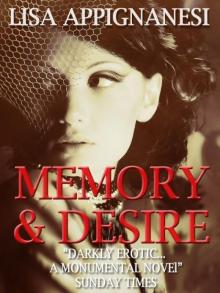 Memory and Desire
Memory and Desire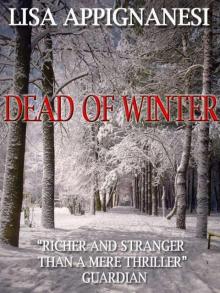 The Dead of Winter
The Dead of Winter Trials of Passion
Trials of Passion Dreams of Innocence
Dreams of Innocence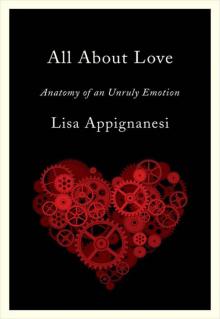 All About Love: Anatomy of an Unruly Emotion
All About Love: Anatomy of an Unruly Emotion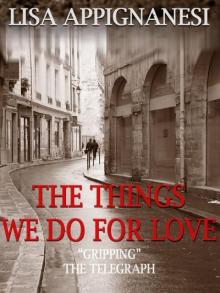 The Things We Do For Love
The Things We Do For Love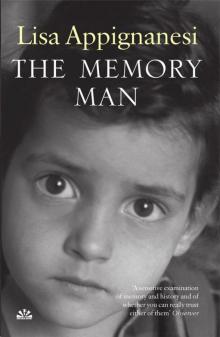 The Memory Man
The Memory Man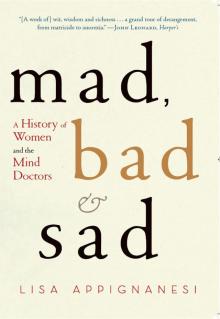 Mad, Bad, and Sad: A History of Women and the Mind Doctors
Mad, Bad, and Sad: A History of Women and the Mind Doctors Sacred Ends
Sacred Ends Paris Requiem
Paris Requiem Sanctuary
Sanctuary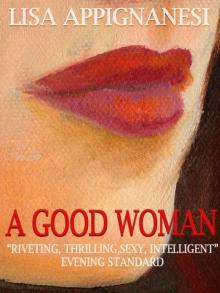 A Good Woman
A Good Woman